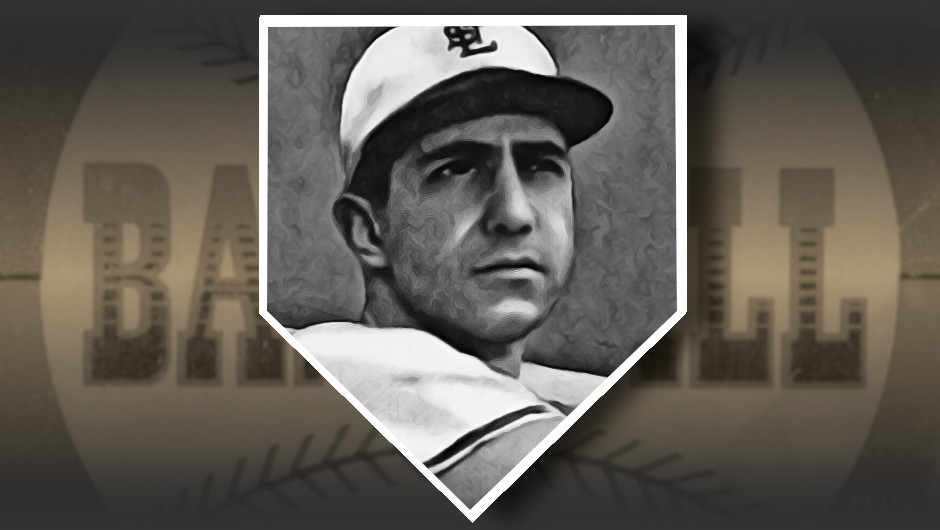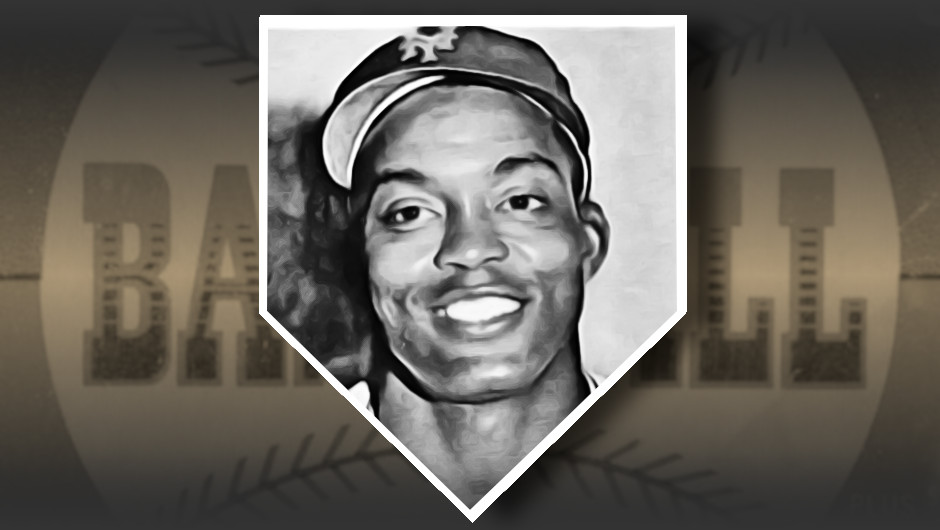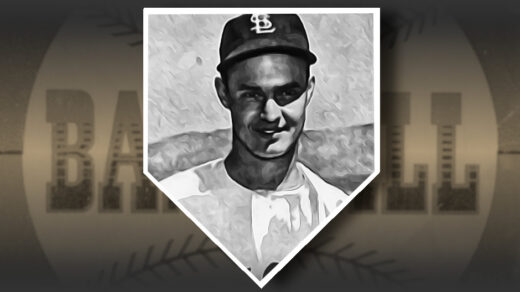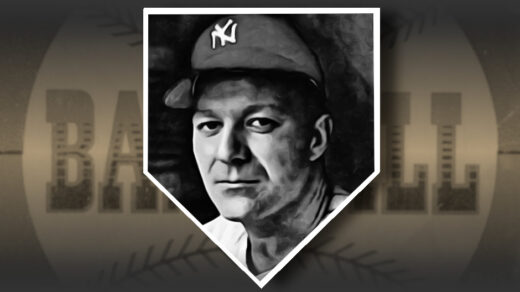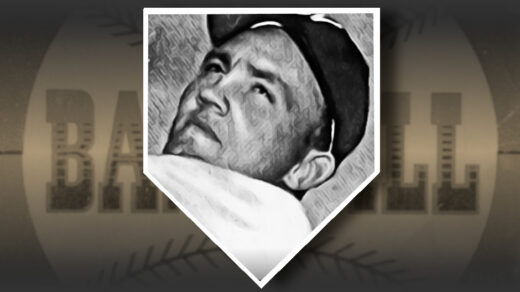The 1952 Topps set arrived just as .400 batting averages were fading into history. The set’s massive checklist missed managed to omit just about every man capable of hitting .400 for a variety of reasons. Ted Williams (.406, 1941) was skipped over due to his spending the 1952 season fighting in Korea.
Baseball was beginning a lengthy integration process when these cards were produced and Topps only included players playing for the 16 primary MLB teams. Omitted were Ray Dandridge (.432 in 1934, playing in AAA ball in ’52) and Tetolo Vargas (.471 with the New York Cubans in 1943). Artie Wilson played briefly with the New York Giants in 1951 after hitting .437 with the Birmingham Black Barons in 1948, but was skipped over for the set.
Rogers Hornsby (.400+ in 1922, 1924-25) managed the St. Louis Browns and Cincinnati Reds in 1952, making his inclusion in the set theoretically possible as a manager card. The inclusion of managers and coaches in the set did not extend further into baseball’s executive ranks. If it had, George Sisler (.400+ in 1920 and 1922) would have been a natural choice as a Brooklyn Dodgers scout. Sisler’s scouting is notable as he focused on the Negro Leagues, the highest level of professional baseball then open to black athletes in the United States. He recommended Jackie Robinson to the Dodgers.
Robinson, of course, needs no introduction after he smashed through the color barrier. However, he was not generally seen as the first choice for this role. Robinson was a promising young player but was not yet in his prime. Seeking someone with an established presence and amazing skills, Brooklyn initially approached the Newark Eagles’ Monte Irvin about signing with the team. Contract issues with Newark’s owner contributed to Irvin remaining outside the Dodgers organization, paving the way for the team to decide on Robinson.
Irvin was among the best players of 1940s-era baseball, playing in the Negro Leagues as well as with teams in Mexico, Cuba, and Puerto Rico. He hit over .400 twice during the decade and came close with three more seasons where he batted .371-.395. He wasn’t just a singles hitter, averaging nearly 30 HRs and 150+ RBIs per 162 games over the same period.
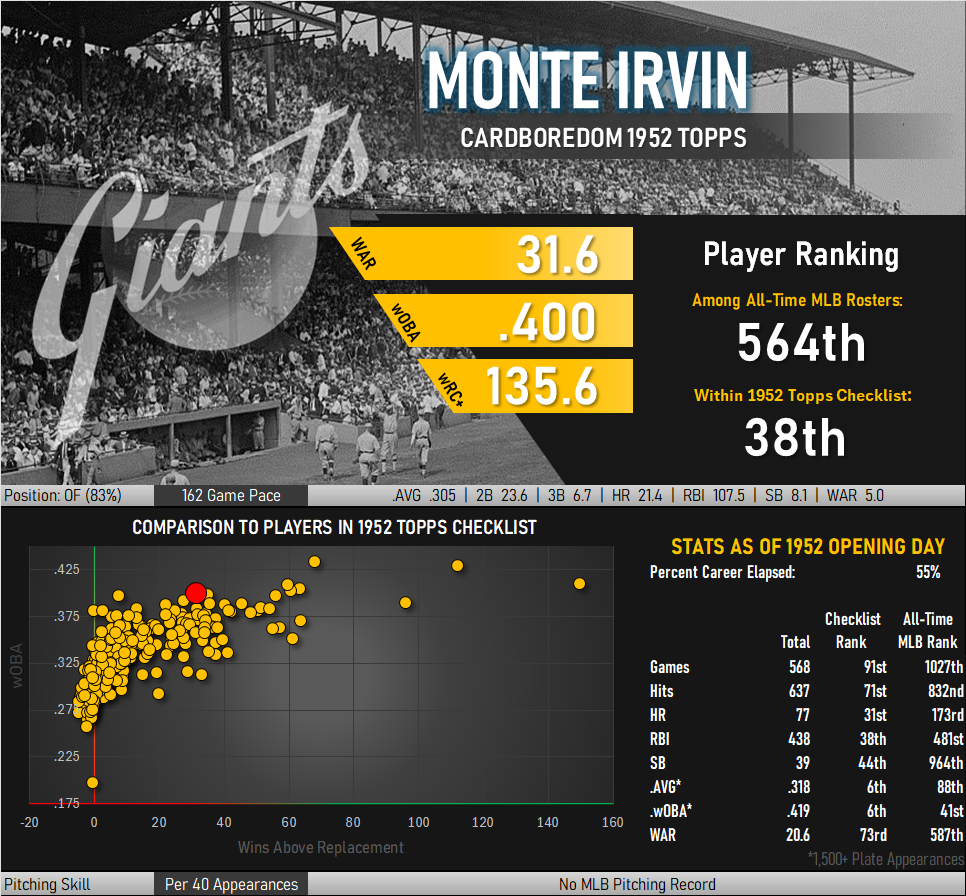
The stats shown above quite literally tell only half the story. Irvin joined the New York Giants at age 30, several years after the signing of Jackie Robinson and in at an age in which players generally see their skills begin to erode. He only played 8 seasons, some of which were limited by injury. Despite this, he was essentially a career .300 hitter from that point forward and ranks among the top 10% of players appearing in the 1952 Topps set using only these statistics. Adding in a prior decade of monster offense on top of this and one can see Irvin was a truly special ballplayer.
Adding Irvin to the ’52 Collection
With Ted Williams and DiMaggio not included in the 1952 Topps set, Irvin may very well be the best player of the 1940s to appear in the checklist. Topps made sure to include him in the star-heavy first series of cards in 1952 and even included him in the inaugural 1951 set.
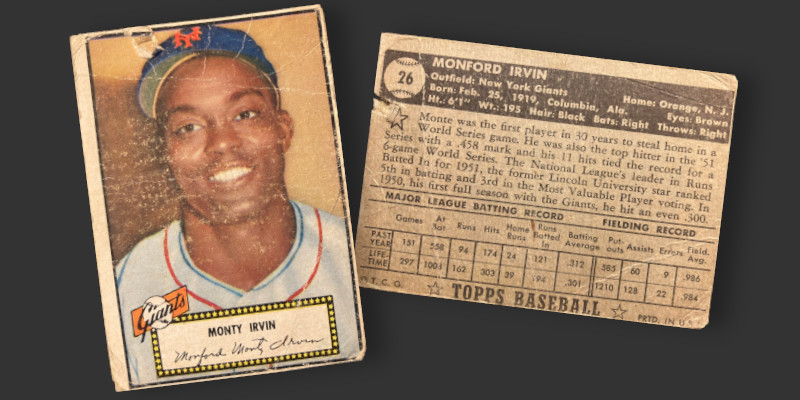
My example hails from the black back printing of first series cards, indicating it was one of the earlier versions to come off the printing press. Topps was still experimenting with its printing technique when the cards were produced and switched to red ink for the dark text box on the back halfway through the printing process.
I really like this card, and really hate it at the same time. It’s an early card of Irvin with great eye appeal in its design. However, I purchased it online with only a blurry photo to guide me. In hand it is truly a beater, with heavily rounded corners, multiple creases, “snow” eating into the photograph, and a tear stretching from the upper border to Irvin’s hat. I’m somewhat OK with these as this was a very inexpensive purchase of such a good player, but there is something else that bugs me. Despite the terrible condition, someone thought they should trim the card. The top border has definitely been cut down to a smaller size, something that was never disclosed about the card. I don’t know why that particular piece of damage bothers me so much while the rest seems passable to me. I love trimmed cards, provided I know upfront what is going on with the card. This one got past me, something that seems mildly insulting to my collecting skills.
Having had the card in hand for some time and learning more about Irvin, this card has made my short list of cards to eventually upgrade. I’ll be on the lookout for a better copy whenever I visit a card show. With one coming up next week, I look forward to having not one but two Monte Irvin cards. That’s a happy thought.



